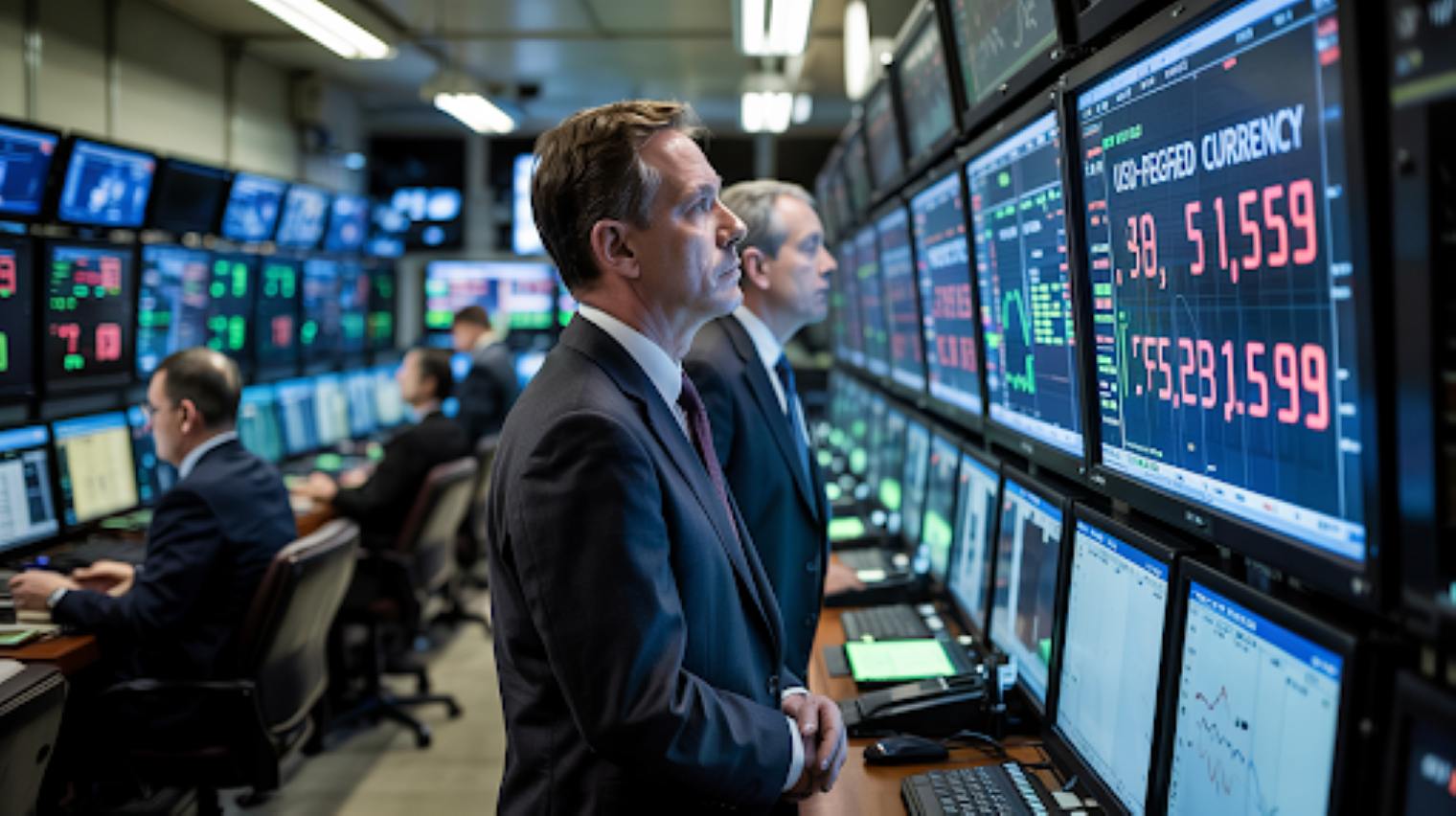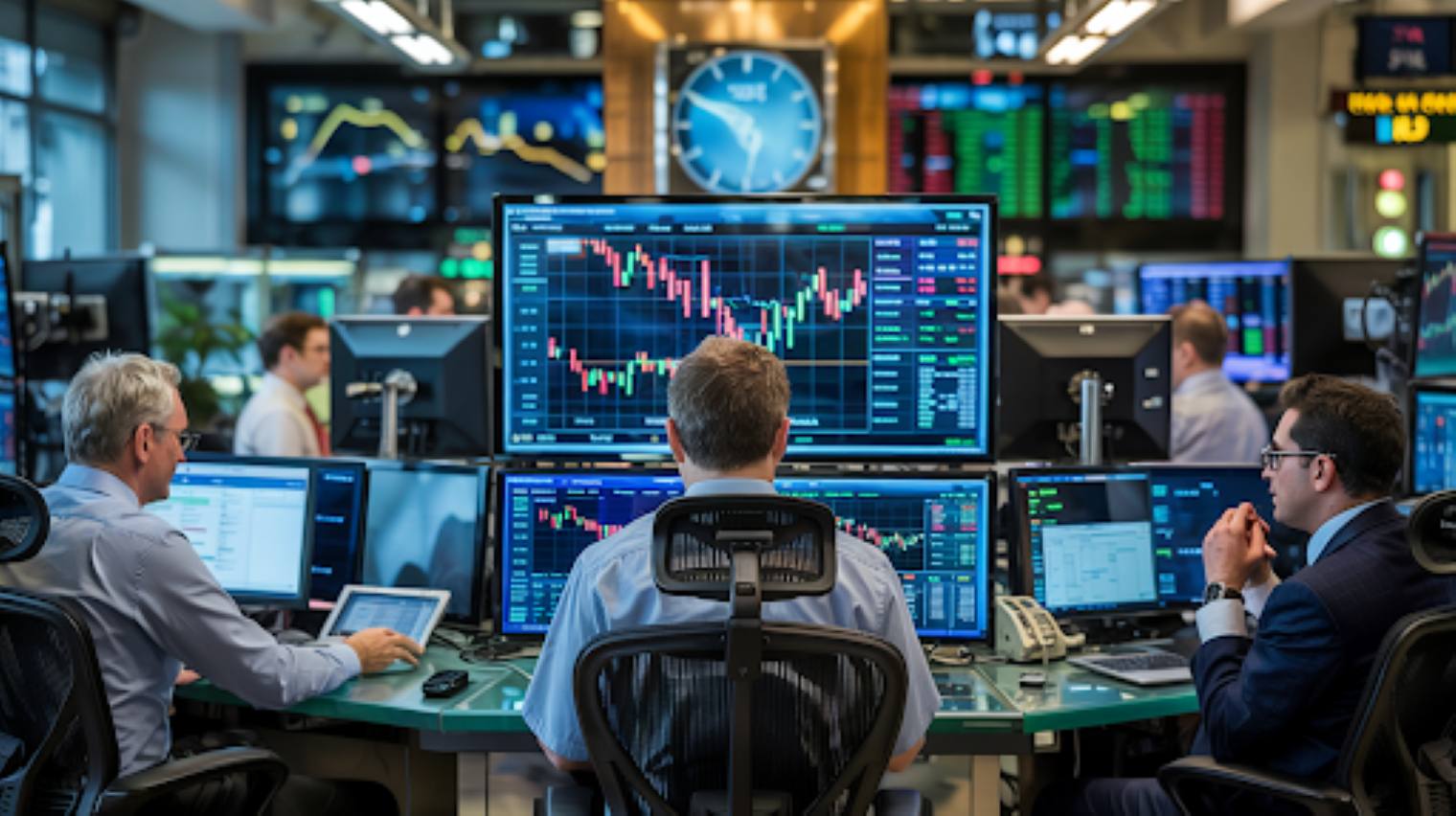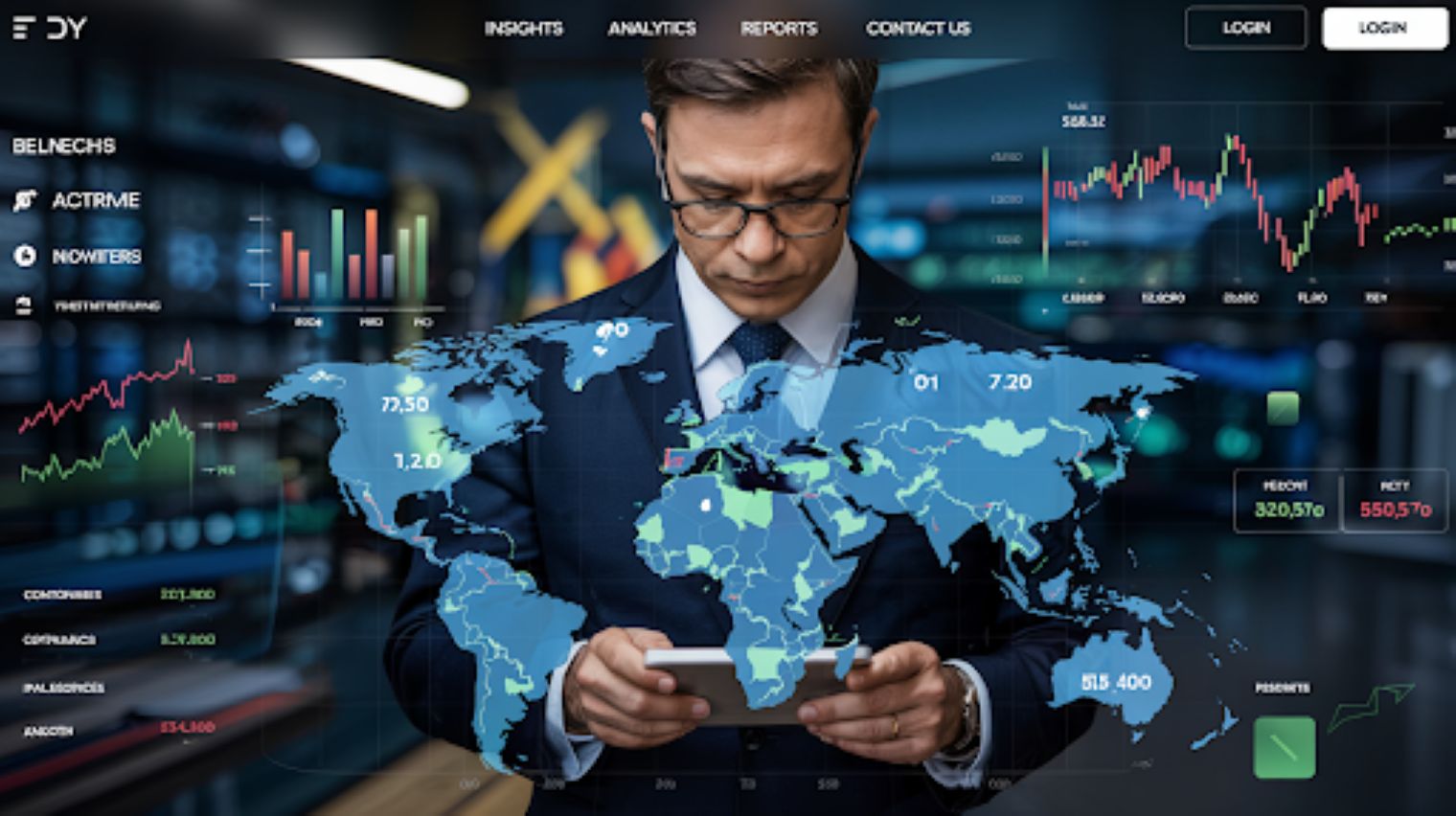Fixed Vs Floating Exchange Rate: Key Differences Explained

Exchange rates are crucial to understanding global finance. They dictate how much one currency is worth when exchanged for another, affecting everything from the price of goods and services across borders to the profitability of international investments. Whether you’re trading stocks, investing in crypto, or simply looking to travel or do business in another country, exchange rates play a vital role in shaping your decisions.
In this article, we’ll explore two primary types of exchange rate systems: fixed VS floating exchange rates. Understanding the differences between these systems can help you navigate global markets, enhance your trading strategies, and even inform your business decisions.
- Fixed rates are government-controlled, offering stability but requiring large currency reserves.
- Floating rates fluctuate with market forces, allowing flexibility but increasing volatility.
- Fixed systems help with long-term planning; floating systems suit agile trading and economic adaptation.
- Most major economies now use floating rates after abandoning gold-pegged systems in the 1970s.
- Fixed rates attract foreign investment through predictability; floating rates self-correct with economic shifts.
- Traders and crypto investors benefit from floating systems but face higher risk.
- Currency fluctuations affect everything from consumer prices to international business strategy.
Understanding The Exchange Rates

Exchange rates determine the relative value of one currency against another, and they have far-reaching implications for economies worldwide. Essentially, exchange rates reflect how much of one currency is needed to obtain another. For example, if the exchange rate between the U.S. Dollar and the Euro is 1 USD to 0.85 EUR, then for every U.S. Dollar you exchange, you’ll get 0.85 Euros.
But why does this matter? In global finance, exchange rates influence everything from consumer prices and inflation to international trade and foreign investments. For a business that exports products, a favorable exchange rate can make its goods cheaper for overseas buyers. On the flip side, it can raise the costs of imports when the value of their currency weakens. For traders in the stock market or crypto markets, exchange rates can have a significant impact on the returns of foreign investments.
What is a Fixed Exchange Rate?

A fixed exchange rate is a system where a country’s currency is tied to another major currency, typically the U.S. Dollar or the Euro, at a set value. This means that the value of the currency is maintained by the country’s government or central bank, regardless of market conditions. The idea behind a fixed exchange rate system is to provide stability and predictability in international trade and investments.
In a fixed exchange rate system, the government or central bank intervenes in the foreign exchange market to ensure the currency maintains its pegged value. For example, a country might set its exchange rate to 1 unit of its currency being equal to 1 U.S. Dollar. In this case, the central bank must hold sufficient foreign reserves to maintain that value, buying or selling the local currency as needed.
Example: Hong Kong has a fixed exchange rate where its currency, the Hong Kong Dollar, is pegged to the U.S. Dollar. This means the Hong Kong Dollar will always be exchanged for the U.S. Dollar at a set rate.
How Fixed Exchange Rates Work
Fixed exchange rates rely on active intervention from the country’s central bank. To maintain the set value, the central bank must hold large reserves of foreign currency. These reserves are used to buy or sell the local currency in the market, ensuring it remains at the desired exchange rate. For example, if a country’s currency begins to weaken against the U.S. Dollar, the central bank can sell some of its reserves to buy back its currency, thus driving up its value.
A key element of this system is the country’s foreign reserves. The more reserves a country holds, the more it can control its currency’s value. However, this system requires constant monitoring and action from the central bank, which may have to adjust the reserve levels based on market conditions.
Pros and Cons of Fixed Exchange Rates
The primary benefit of a fixed exchange rate system is the stability it provides. Countries with fixed rates often attract foreign investment because investors can be confident that exchange rates will remain stable. This predictability makes it easier for businesses to plan their international operations and for consumers to purchase foreign goods without worrying about fluctuating prices.
However, fixed exchange rates also come with significant downsides. Maintaining the fixed rate requires enormous foreign currency reserves, which can strain the country’s economy. Furthermore, if a country faces an economic crisis or financial instability, the fixed exchange rate may become unsustainable, leading to a devaluation or forced adjustment.
What is a Floating Exchange Rate?

In contrast to fixed rates, floating exchange rates are determined by market forces of supply and demand. This means that the value of a currency can fluctuate freely based on various factors, including economic performance, investor sentiment, and global events.
For example, the value of the U.S. Dollar is not pegged to any particular amount of another currency. Its value is determined by how much people are willing to pay for it in the global market, based on factors like the U.S. economy’s health and demand for American goods. Unlike a fixed system, there is no central authority maintaining a set value for a floating currency. Instead, the market decides.
How Floating Exchange Rates Work
A floating exchange rate operates like a free-market system, where the value of a currency is continuously changing. These changes occur as traders, businesses, and governments buy and sell currencies based on economic conditions, global events, and market speculation.
For example, if the demand for a country’s products rises internationally, the value of that country’s currency may appreciate. Conversely, if the country’s economy weakens, the value of its currency might decline. This flexibility makes floating exchange rates more dynamic and responsive to changes in the global economy.
Governments can intervene in floating exchange rate systems, but they typically do so only in extreme situations to prevent excessive inflation or deflation. For instance, a country might step in if its currency’s value fluctuates too much, causing instability in international trade.
Pros and Cons of Floating Exchange Rates
One of the key benefits of a floating exchange rate system is its adaptability. Since the market determines the value of a currency, it is constantly adjusting to the economic environment. This self-correction can prevent major imbalances in the economy, such as trade deficits or excessive inflation.
However, floating exchange rates can also introduce volatility. The constant fluctuation in currency value can make international trade more unpredictable and increase risks for investors. Additionally, countries with unstable economies may find it difficult to maintain a consistent currency value, leading to potential economic crises.
Key Differences of Fixed Vs Floating Exchange Rates
Now that we have discussed both types of exchange rate systems, it is important to compare them directly. The main difference lies in how the value of money is set and maintained.
In a fixed system, the government or central bank works hard to keep the currency at a set value. This creates a sense of stability that many businesses and investors appreciate. In contrast, a floating system relies on the market to set the value, which means that the currency can change from day to day.
The stability of a fixed system often helps with long-term planning. When companies know that the exchange rate will not change suddenly, they can budget and plan more confidently.
On the other hand, the flexibility of a floating system allows the value to adjust to real economic conditions. This can be an advantage when a country’s economy is growing or when market conditions change rapidly.
Another key difference is the amount of reserve money that governments need to hold.
A fixed system requires large reserves to defend the currency’s value. A floating system does not need as many reserves because the market itself handles the changes. This difference in reserve requirements can affect a country’s overall economic strategy.
These differences are not just abstract ideas. They affect international trade and influence investors’ views of a country’s economy.
For example, a country with a very stable currency may attract more foreign businesses and investors. However, if a currency is known to fluctuate widely, companies might be more cautious when doing business with that country. In this way, the choice of system plays a role in shaping a country’s economic future.
Special Considerations and Historical Background
It is useful to look at history to better understand why countries choose one system over the other. Many nations once used a system where money was linked to a commodity like gold. In those days, the value of money was fixed because it was tied directly to a set amount of gold. Later, many countries chose to peg their currencies to a major foreign currency. This method worked well for a long time because it offered stability and built trust among investors.
A major turning point came in the early 1970s when the world moved away from fixed exchange systems. The changes were driven by big economic events that made it difficult to maintain a steady value. Since then, most large economies have adopted a system where the market sets the currency value. This historical shift shows that both methods have their strengths and limits. The past helps us see why many countries today prefer systems that adjust automatically to market conditions.
When we look back at these changes, we see that history has taught many lessons about how money should be managed. The experiences of previous decades show that there is no perfect system, but each has its own role in different economic circumstances. By learning from the past, countries and investors can make better choices for the future.
Is a Fixed or Floating Exchange Rate Better for Your Investments?

When it comes to investment decisions, the choice between a fixed and floating exchange rate system depends on your risk tolerance and investment goals. Fixed exchange rates provide stability and predictability, making them suitable for long-term investors or businesses looking for certainty. However, maintaining a fixed exchange rate can be challenging, especially during times of economic crisis.
Floating exchange rates, on the other hand, offer opportunities for short-term profits, particularly for forex traders who can take advantage of currency fluctuations. However, this volatility can also increase risks, making it a less suitable choice for long-term investments.
Advantages for Stock Traders and Crypto Investors

For stock traders and crypto investors, understanding exchange rates is crucial for making informed decisions. A floating exchange rate system can provide more opportunities to profit from market changes, as currencies fluctuate in value. However, the volatility inherent in this system can also introduce significant risks, particularly for long-term investors.
Crypto investors, in particular, should pay attention to exchange rates, as they can affect the value of cryptocurrencies relative to fiat currencies. A fluctuating exchange rate can impact the buying and selling price of crypto assets, influencing potential profits and losses.
How Currency Systems Influence Market Movements

The way money is valued around the world has a direct impact on many areas of our lives. For instance, when the exchange rate is stable, companies can plan their expenses and investments with more confidence. This stability encourages more trade and helps grow the economy. In contrast, when a currency’s value changes quickly, businesses must work harder to manage the risks associated with these changes.
For stock traders, the clarity that comes with a fixed system can lead to steady returns. On the other hand, the rapid adjustments in a floating system can create opportunities for those who are ready to act fast. In digital markets, where changes happen in real time, the method used to set currency values can influence both profits and losses. A strong grasp of these ideas helps investors make smart choices when they decide to buy or sell assets.
Impact on Consumer Prices and Daily Living
When the value of money shifts, it can affect the price of imported goods and even the cost of everyday items. For example, if a country’s currency weakens, imported goods may become more expensive. This change can ripple through the economy and affect everything from supermarket prices to the cost of electronics. By keeping an eye on these trends, businesses and consumers can better plan for the future.
The lessons learned from these market movements are not only useful for large companies. They are also important for individual investors and regular people who travel or shop internationally. A better understanding of how money works on a global level can lead to smarter decisions and a more secure financial future.
Conclusion
Understanding the difference between fixed and floating exchange rates is crucial for anyone involved in global trade, investments, or business. Fixed exchange rates provide stability and predictability, making them ideal for countries looking to attract foreign investment. However, they come with the challenge of maintaining the peg and requiring large foreign currency reserves.
Floating exchange rates, on the other hand, offer flexibility and the ability to adapt to economic conditions. While they can provide more opportunities for market-driven profits, they also introduce higher volatility and risks. Ultimately, whether a fixed or floating exchange rate system is better depends on individual or business needs, risk tolerance, and investment strategies.
